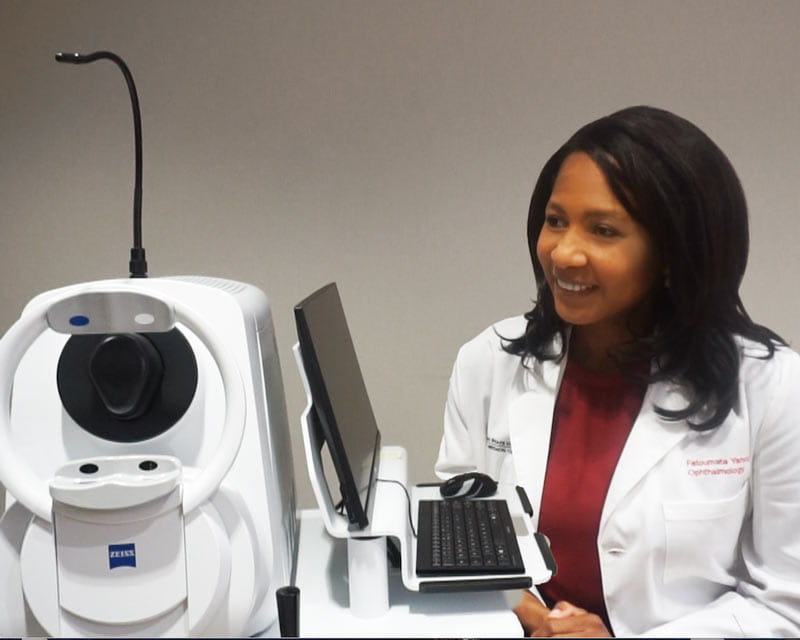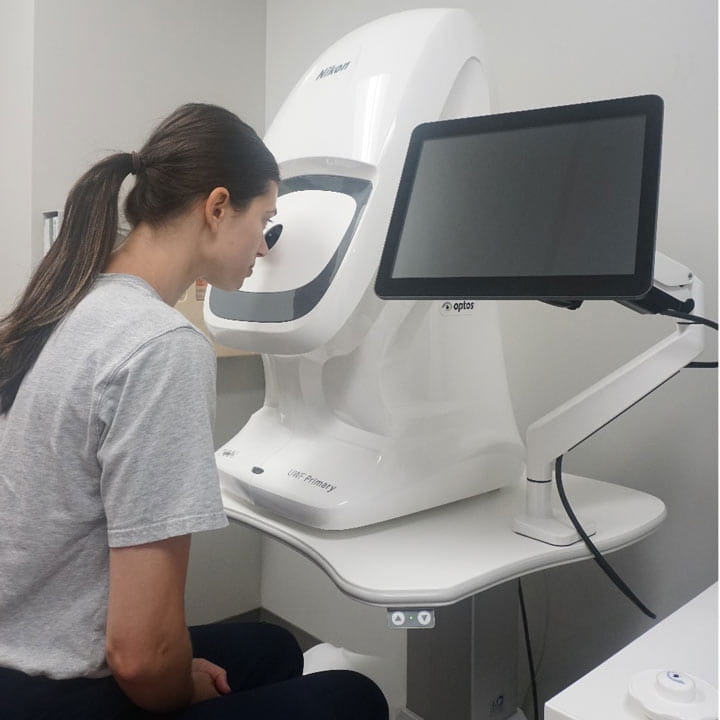
Swept-source OCT angiography reveals exquisite details of ocular structures
 More patients at risk for retinal complications from systemic diseases have increased access to retina evaluations thanks to the expansion of The Ohio State University Wexner Medical Center’s teleophthalmology program.
More patients at risk for retinal complications from systemic diseases have increased access to retina evaluations thanks to the expansion of The Ohio State University Wexner Medical Center’s teleophthalmology program.
Launched in 2019, this program started in three primary care offices in Columbus with a focus on diabetic retinopathy screening and has grown into all of Ohio State’s primary care sites in central Ohio. In addition, retina screening is now available for patients with sickle cell disease through The Ohio State University Comprehensive Cancer Center – Arthur G. James Cancer Hospital and Richard J. Solove Research Institute (OSUCCC – James) sickle cell program.
The founder of the teleophthalmology program, Matthew Ohr, MD, Ohio State ophthalmologist and a clinical professor of Ophthalmology and Visual Sciences at The Ohio State University’s College of Medicine, explains that expansion of retina screening is important because disease-related retinopathy doesn’t always present with vision changes. Early discovery — when it’s easier to treat — can help doctors intervene with medicine or other treatments to prevent its progression and minimize impact on vision.
The teleophthalmology program’s goal is to remove barriers for patients, such as transportation, work schedules, cost or lack of knowledge about the importance of the tests. Placing easy-to-operate cameras with an ultra-widefield lens in primary care offices and other clinics makes it more convenient for patients to get retina imaging during their routine clinic visits.
Medical assistants at the sites are trained to perform retina scans, which are then uploaded into the patient’s medical record for Ohio State ophthalmologists to review. After assessment of the image, the ophthalmologist reports back to the primary care physician or hematologist to indicate if the scan is normal or if the patient needs further examination by an eye specialist.
Since its inception, the diabetic retinopathy project has read 2,657 images for 2,283 patients. The convenience of this service significantly increased patient compliance with recommended yearly diabetic examinations. In addition, diabetic retinopathy was identified in several patients who were ultimately referred for evaluation and treatment of potentially blinding disease.
Historically, one of the biggest challenges with teleophthalmology is sustainability of the program. “Clinicians are busy. We can put cameras in the various sites, but it’s hard to keep them top of mind for primary care doctors and staff,” Dr. Ohr says. “This is still new, and there really isn’t a financial incentive for them to perform the scans. Often, the camera will get used for a period of time, but then its use fades away.”
To create a more sustainable model, Dr. Ohr partnered with Yao Liu, MD, an ophthalmologist and assistant professor at the University of Wisconsin School of Medicine and Public Health, to study ways to establish a sustainable program. They were awarded a grant from the National Institutes of Health’s National Eye Institute to sustain increased diabetic eye screening rates using teleophthalmology in rural, multi-payer health systems.
The Implementation of Teleophthalmology in Rural Health Systems (I-Trust) Study was funded in the summer of 2021 as a five-year project at eight sites across five states. This study evaluates the effectiveness of an implementation program on the proportion of patients with diabetes who are adherent with yearly diabetic screening guidelines, and evaluate whether those interventions make a difference to the continued success of the program.
Dr. Ohr says having a champion at each site and support from leadership is key. He credits the support from Sayoko Moroi, MD, PhD, chair of Ohio State’s Department of Ophthalmology and Visual Sciences, as a significant factor in the success and expansion of the program at Ohio State.
Like diabetes, sickle cell disease can lead to vision problems. Sickle cell disease affects the shape and flexibility of red blood cells — they become stiff and sticky, shaped like a sickle instead of their usual round shape. These sickle-shaped cells are unable to travel easily through blood vessels and tend to clump together, blocking the flow of normal blood and oxygen. The small vessels in the retina are particularly vulnerable. Sickle cell disease can cause damage to the retina and, over time, cause blindness.
Dr. Ohr has been working to expand the teleophthalmology program to patients with sickle cell disease to screen for sickle cell retinopathy. It’s a novel use of teleophthalmology, and can be very effective.
“Patients with sickle cell disease can have subtle retinopathy that can lead to blindness,” Dr. Ohr says. “Generally, these patients do not follow up for eye exams because younger individuals aren’t always thinking about their eyes. If they don’t get screened regularly, issues go undetected until the damage is severe.”
Using funds from a university-awarded Patient Care Innovation grant, the teleophthalmology program purchased an ultra-widefield lens camera for the OSUCCC – James. Now, patients with sickle cell can be screened during their regular clinic visits.